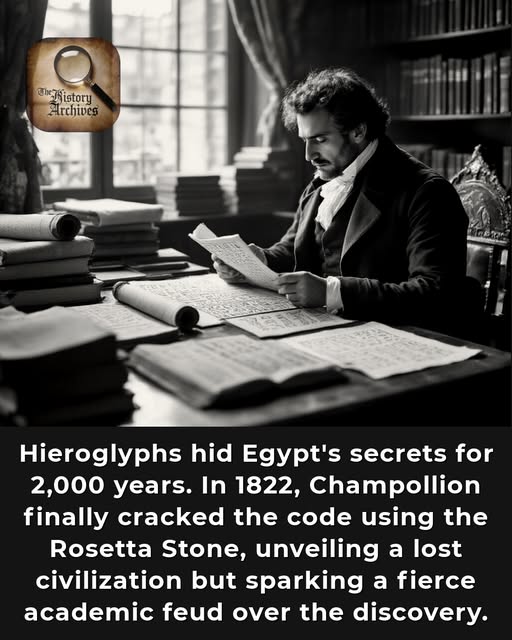
In 1822, a 31-year-old French scholar named Jean-François Champollion unlocked the secrets of ancient Egypt, but his discovery ignited a fierce academic battle.
After years of intense study, Champollion announced he had deciphered Egyptian hieroglyphics, a complex script that had remained unreadable for nearly two millennia.
His crucial breakthrough relied heavily on the Rosetta Stone. This famous artifact was inscribed with the same decree in three scripts: ancient Greek, Demotic, and hieroglyphics, providing a vital key for comparison.
Champollion successfully demonstrated that hieroglyphs were not merely symbolic pictures but a sophisticated system combining phonetic signs (representing sounds) and ideographic signs (representing concepts or words).
This discovery, published in his *Précis du système hiéroglyphique* in 1824, was a monumental step in understanding the rich history and culture of ancient Egyptian civilization.
However, Champollion’s renowned achievement was not without its share of controversy. British polymath Thomas Young had also made significant early progress, identifying phonetic elements in hieroglyphs before 1819.
Accusations emerged that Champollion may not have given sufficient credit to Young’s foundational contributions, leading to academic disputes that persisted for many years. The full story of decipherment involved more than one brilliant mind.
Despite these debates, Champollion’s systematic approach profoundly changed the field of Egyptology. In 1826, he was appointed the first curator of the Egyptian collection at the Louvre Museum in Paris.
He later led an expedition to Egypt from 1828 to 1830, where he could finally read the ancient inscriptions directly from the monuments and papyri, further validating his life’s work.
Sadly, Jean-François Champollion died in 1832 at the young age of 41. His comprehensive grammar of the Ancient Egyptian language was published posthumously, cementing his pivotal role in rediscovering a lost world.
